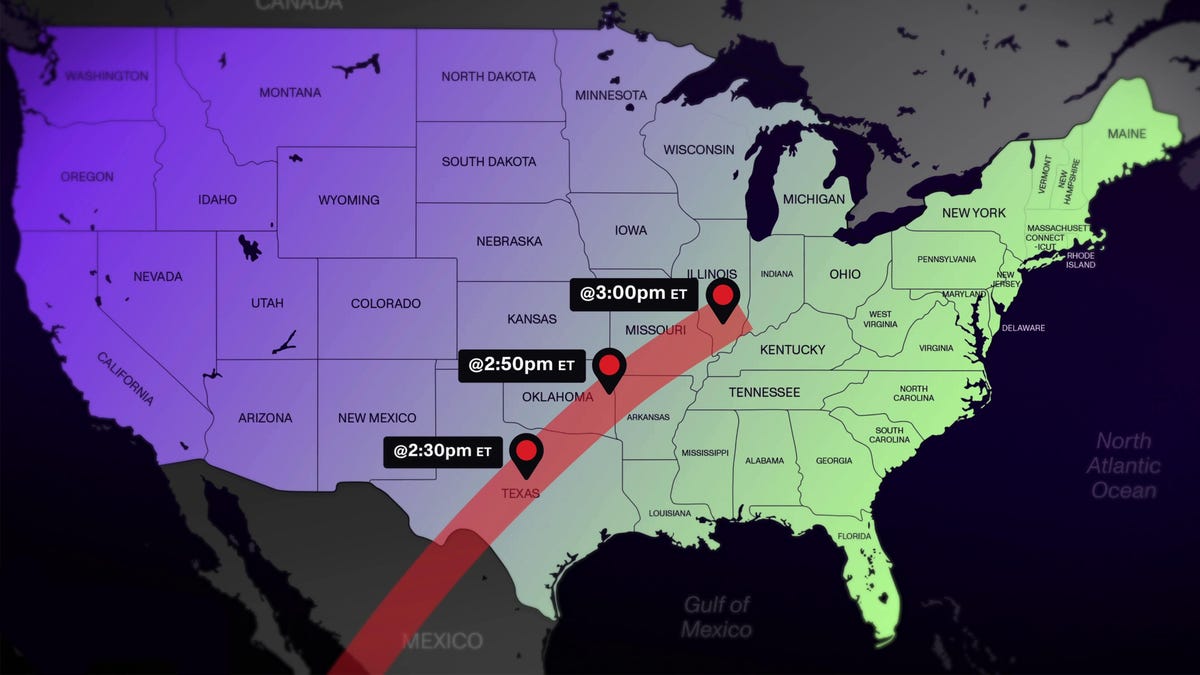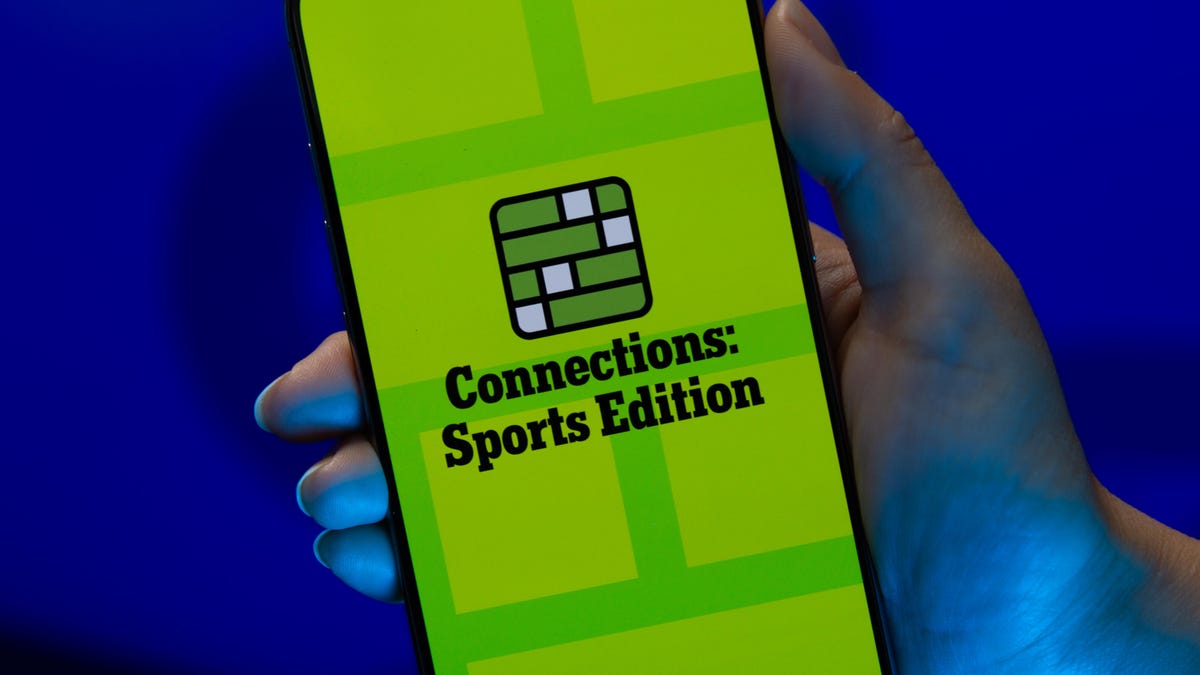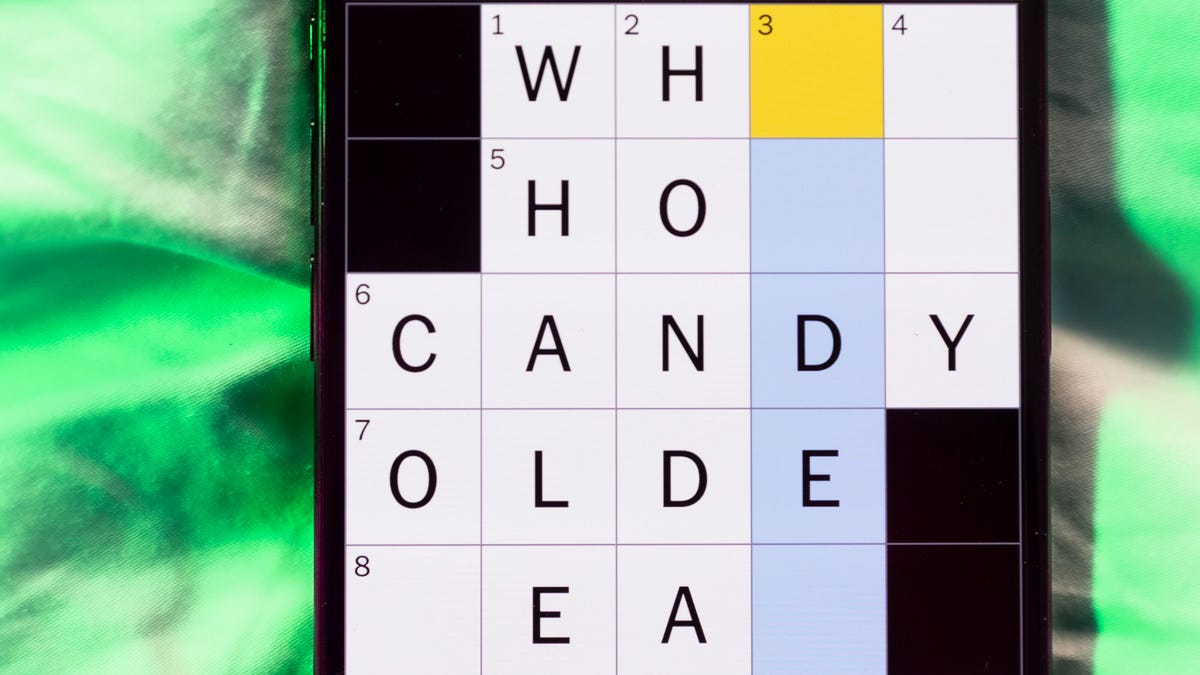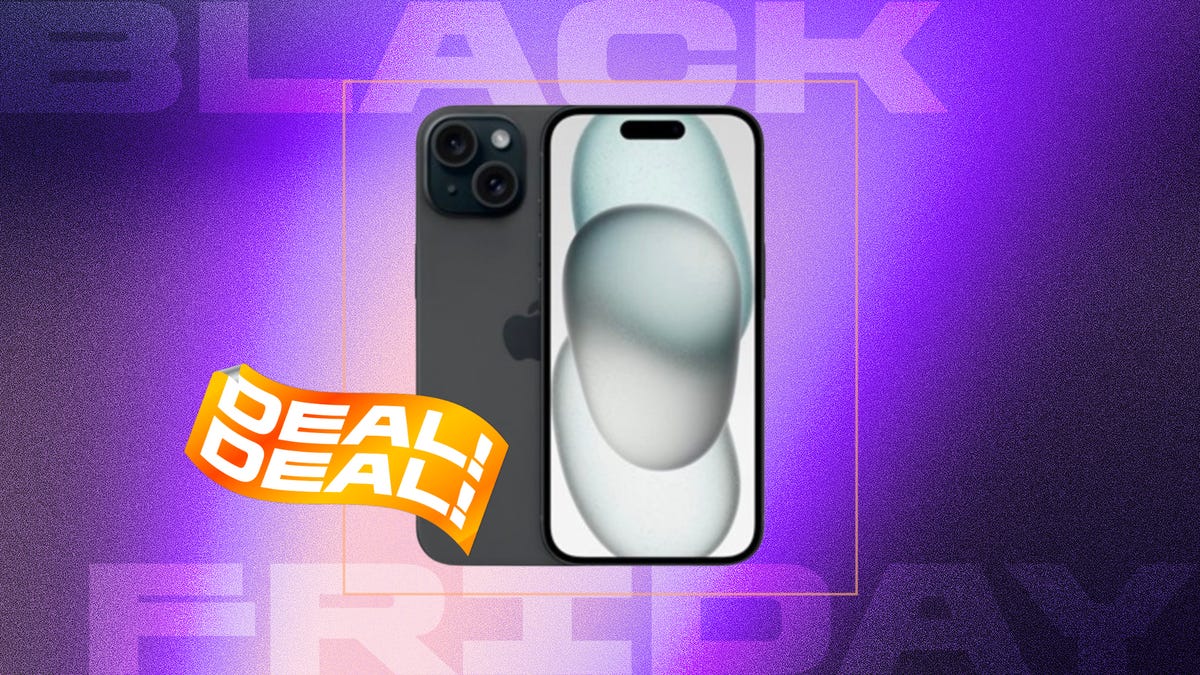Technologies
NASA Leans Into Solar Eclipse With 3 Rocket Launches: Here’s What’s Up With That
The space agency isn’t letting today’s solar eclipse go to waste.

We’re just hours away from North America’s last total solar eclipse until 2044, and as we prepare to look to the sky, NASA is preparing to launch three rockets.
Before, during and after the eclipse on Monday, NASA will fire three sounding rockets to determine how the total eclipse could affect radio communications on Earth. The findings could pave the way for NASA to develop new technologies to protect radio communications during both brief and extended periods when solar behavior disrupts particles on Earth.
Stargazers from Mexico to the US and Canada are standing by for the last total solar eclipse to pass over the contiguous US for the next 20 years. The duration of totality, or the time during which the moon completely shrouds the sun from view, will last 4 minutes and 27 seconds. The eclipse will reach Texas at approximately 1:10 p.m. ET and Maine by 2:22 p.m. ET. By 4:17 p.m. ET, it will move beyond the eastern North American border.
Firing rockets during an eclipse may sound like it comes straight from a sci-fi movie, but it’s a technique that’s been used for years to measure scientific data and theories. Indeed, eclipses provide critical, if short-lived, opportunities for scientists to gather information on a variety of topic areas to test whether their concepts are accurate.
Arguably the most important finding during an eclipse occurred in May 1919, when scientists discovered during a total eclipse that some stars appeared to be in the wrong place, according to NASA. The finding provided critical evidence to support Albert Einstein’s theory of relativity and the idea that the sun or other large celestial objects have so much gravity that they can bend light and distort spacetime.
NASA’s rocket launches on Monday won’t necessarily have that same gravitas, but science works in increments. The launches will be streamed live, so you can see what happens. Here’s how.
Why is NASA firing rockets during the eclipse?
The space agency is firing three sounding rockets, or rockets carrying scientific instruments, into the ionosphere, the region of the Earth’s atmosphere between the lower atmosphere, where we live, and space.
The ionosphere is scientifically important because it’s made up of particles that become ionized, or electrically charged, when they interact with the sun’s radiation. According to NASA, the ionosphere thins at night and thickens when the sun’s rays are hitting it. The ionosphere can be unpredictable, since it’s highly sensitive to disruption.
«Earth’s terrestrial weather and space weather can impact these particles, making it a dynamic region and difficult to know what the ionosphere will be like at a given time,» NASA says.
Another thing: the ionosphere affects communication, and especially high-frequency communication like radio waves. That could, for instance, create disturbances in communications with pilots in the air or with government agencies doing research. But radio waves traveling to and from satellites aren’t just of concern to aviators and scientists. They’re also vital elements of daily life, from satellite internet services like SpaceX’s Starlink to the GPS signals that underlie all manner of financial transactions and that help you get where you’re going.
From a site in Virginia, NASA’s three rockets will be launched into the ionosphere 45 minutes apart: before the eclipse starts; when the eclipse is ongoing; and after the eclipse has reached its peak. The rockets will reach a maximum altitude of 260 miles, allowing them to spend plenty of time in the ionosphere, which spans 55 miles to 310 miles above the Earth’s surface.
Each of the rockets is carrying four two-liter soda bottle-sized instruments that will be ejected during flight to evaluate any ionosphere disturbances, or perturbations, during the eclipse.
«Gathering the data on these perturbations will help scientists validate and improve current models that help predict potential disturbances to our communications, especially high frequency communication,» NASA says.
Has NASA fired rockets at an eclipse before?
This isn’t the first time NASA has fired rockets during an eclipse. In October, NASA fired the same three rockets from its White Sands Test Facility in North Mexico during an annular solar eclipse. The agency said that it was able to recover the rockets and refurbish them, allowing them to be used in Monday’s mission.
Thanks to that mission, scientists were able to see ionosphere disturbances after it fired the second and third rockets, during and after the eclipse, respectively. NASA didn’t see any ionosphere disturbance during the first launch.
However, this time around, the rockets are equipped with additional instruments, allowing them to capture more information than they did last year, NASA says.
When is NASA firing its rockets?
NASA plans to launch all three rockets from its Wallops Island facility in Virginia. The first rocket will launch at approximately 2:40 p.m. ET, with the second rocket launching at approximately 3:25 p.m. ET. NASA plans to launch the final rocket by 4:05 p.m. ET.
As always, timing on the launches depends on a variety of factors, including on-the-ground conditions, and may be subject to change. But since the eclipse isn’t waiting for NASA to be ready to fire rockets, expect the space agency to try to keep a tight schedule to ensure it doesn’t miss its window to capture data.
How can I watch NASA fire rockets at the eclipse?
If you’re interested in watching NASA’s rocket-firing mission, the agency will livestream it from its official Wallops Island YouTube page. It’ll also be featured during NASA’s official solar eclipse broadcast
The rocket-only livestream will begin at 2:30 p.m. ET. NASA will start airing its solar eclipse coverage at 1 p.m. ET.
Technologies
Today’s NYT Connections: Sports Edition Hints and Answers for Nov. 27, #430
Here are hints and the answers for the NYT Connections: Sports Edition puzzle for Nov. 27, No. 430.

Looking for the most recent regular Connections answers? Click here for today’s Connections hints, as well as our daily answers and hints for The New York Times Mini Crossword, Wordle and Strands puzzles.
Fittingly, today’s Thanksgiving Day Connections: Sports Edition is mostly about football (although the yellow category covers all sports, really). If you’re struggling with today’s puzzle but still want to solve it, read on for hints and the answers.
Connections: Sports Edition is published by The Athletic, the subscription-based sports journalism site owned by The Times. It doesn’t appear in the NYT Games app, but it does in The Athletic’s own app. Or you can play it for free online.
Read more: NYT Connections: Sports Edition Puzzle Comes Out of Beta
Hints for today’s Connections: Sports Edition groups
Here are four hints for the groupings in today’s Connections: Sports Edition puzzle, ranked from the easiest yellow group to the tough (and sometimes bizarre) purple group.
Yellow group hint: Grab some points.
Green group hint: Pass the turkey.
Blue group hint: Face your big rival.
Purple group hint: Playing with letters in team names.
Answers for today’s Connections: Sports Edition groups
Yellow group: Places where one scores.
Green group: Associated with the NFL on Thanksgiving.
Blue group: College football rivalry «cups.»
Purple group: NFL teams, with the first letter changed.
Read more: Wordle Cheat Sheet: Here Are the Most Popular Letters Used in English Words
What are today’s Connections: Sports Edition answers?
The yellow words in today’s Connections
The theme is places where one scores. The four answers are end zone, goal, hoop and plate.
The green words in today’s Connections
The theme is associated with the NFL on Thanksgiving. The four answers are Cowboys, Lions, Madden and Turducken.
The blue words in today’s Connections
The theme is college football rivalry «cups.» The four answers are Apple, Commonwealth, Governor’s and Territorial.
The purple words in today’s Connections
The theme is NFL teams, with the first letter changed. The four answers are fills (Bills), Mets (Jets), pears (Bears) and yams (Rams).
Technologies
Today’s NYT Mini Crossword Answers for Thursday, Nov. 27
Here are the answers for The New York Times Mini Crossword for Nov. 27.

Looking for the most recent Mini Crossword answer? Click here for today’s Mini Crossword hints, as well as our daily answers and hints for The New York Times Wordle, Strands, Connections and Connections: Sports Edition puzzles.
It’s Thanksgiving, but I wasn’t too thankful for today’s Mini Crossword. It took me nearly four minutes to solve and has some very tricky clues. Read on for the answers. And if you could use some hints and guidance for daily solving, check out our Mini Crossword tips.
If you’re looking for today’s Wordle, Connections, Connections: Sports Edition and Strands answers, you can visit CNET’s NYT puzzle hints page.
Read more: Tips and Tricks for Solving The New York Times Mini Crossword
Let’s get to those Mini Crossword clues and answers.
Mini across clues and answers
1A clue: Enjoyed a Thanksgiving meal
Answer: FEASTED
8A clue: Back half of a GOAT?
Answer: ALLTIME
9A clue: Sudden urge
Answer: IMPULSE
10A clue: Santa’s landing place
Answer: ROOF
11A clue: Abstain from eating
Answer: FAST
15A clue: Tough guy
Answer: BRUISER
18A clue: Ready to use without further assembly
Answer: TURNKEY
19A clue: Some pieces of [circled letters] at the Thanksgiving table
Answer: WINGS
Mini down clues and answers
1D clue: Inside the foul line, in baseball
Answer: FAIR
2D clue: Furry monster with a falsetto
Answer: ELMO
3D clue: Pet food brand
Answer: ALPO
4D clue: Thanksgiving side dish that can fill the [circled letters]
Answer: STUFFING
5D clue: Shop ___ you drop
Answer: TIL
6D clue: M M M M
Answer: EMS
7D clue: Billy ___ Williams, actor who played Lando Calrissian in «Star Wars»
Answer: DEE
12D clue: Requests
Answer: ASKS
13D clue: «Get what I’m saying?»
Answer: SEE
14D clue: Give it a go
Answer: TRY
15D clue: «I should mention …,» for short
Answer: BTW
16D clue: N.B.A. power forward ___ Hachimura
Answer: RUI
17D clue: Large coffee dispenser
Answer: URN
Technologies
I Found This Refurbished iPhone 15 for Just $449 at Woot This Black Friday
This used model is pristine and an unbeatable $281 off its list price.

Apple makes some of the best phones on the market right now, but their price tags make a lot of buyers wince. However, now that the new is out, you can save on refurbished previous-gen phones such as the iPhone 15. If you want to save as much as possible, then this Woot deal is one you want want to miss out on. You can make a refurbished 128GB iPhone 15 yours for just $449 when you use the coupon code GRAVY. This deal is available today only, so it’s especially important to act fast.
There are a few things you should know about this Woot offer before you place your order. Woot classifies these phones as «pristine,» which means that they’ve «never been in customer hands» and have been tested and ensured to have 100% battery life. They do come backed by a one-year limited warranty, but are not eligible for AppleCare and will not come in the original box. Also note that there’s only a single configuration available, which comes in black and has 128GB of storage.
As for the specs, you’ll get everything that made the iPhone 15 so popular when it launched in Sept. 2023, including a large 6.1-inch Super Retina XDR display with the Dynamic Island built in. The fast A16 Bionic chip has a 5-core GPU while the 48-megapixel main camera takes stunning photos. Emergency SOS via Satellite is included, should you find yourself in need of rescue beyond the reach of cellular connectivity as well.
If you’re not sure if this previous-gen model is for you, you can check out our list of all the best iPhone 17 deals for savings on Apple’s latest phones. You can also find plenty of other deals on the iPhone 15 and other previous-gen models in our full roundup of all the best iPhone deals.
MOBILE DEALS OF THE WEEK
-
$749 (save $250)
-
$475 (save $175)
-
$499 (save $300)
-
$900 (save $400)
Why this deal matters
Direct discounts on iPhones are exceedingly rare, so shopping refurbished is one of the only ways to score some savings without signing up with a carrier. This iPhone 15 is essentially new, but at just $449 you’re still getting it for around the same price as a used model, making this an incredible bargain.
Join Our Daily Deals Text Group!
Get hand-picked deals from CNET shopping experts straight to your phone.
By signing up, you confirm you are 16+ and agree to receive recurring marketing messages at the phone number provided. Consent is not a condition of purchase. Reply STOP to unsubscribe. Msg & data rates may apply. View our Privacy Policy and Terms of Use.
-

 Technologies3 года ago
Technologies3 года agoTech Companies Need to Be Held Accountable for Security, Experts Say
-

 Technologies3 года ago
Technologies3 года agoBest Handheld Game Console in 2023
-

 Technologies3 года ago
Technologies3 года agoTighten Up Your VR Game With the Best Head Straps for Quest 2
-

 Technologies4 года ago
Technologies4 года agoBlack Friday 2021: The best deals on TVs, headphones, kitchenware, and more
-

 Technologies4 года ago
Technologies4 года agoVerum, Wickr and Threema: next generation secured messengers
-

 Technologies4 года ago
Technologies4 года agoGoogle to require vaccinations as Silicon Valley rethinks return-to-office policies
-

 Technologies4 года ago
Technologies4 года agoOlivia Harlan Dekker for Verum Messenger
-

 Technologies4 года ago
Technologies4 года agoiPhone 13 event: How to watch Apple’s big announcement tomorrow
